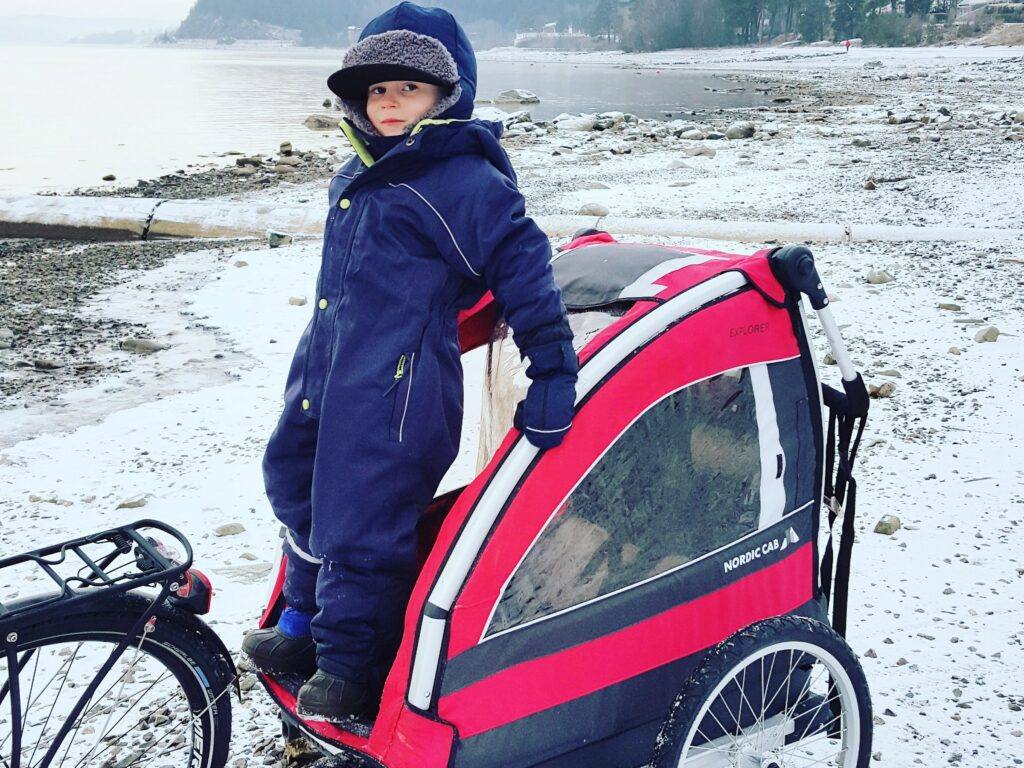When there’s snow, ice, and temperatures drop below zero, it might not be very tempting to jump on your bike. But with the right equipment and clothing, winter cycling can be a pleasant experience.

Winter cycling a great experience
To make winter cycling a good experience, you must prioritize safety. You need lights on the bike and bike trailer—a white or yellow light at the front and a red light at the back, in addition to reflectors on the pedals and the back of the bike. The Nordic Cab Explorer comes with a red LED light on the back of the trailer and many integrated reflectors around the entire bike trailer. You should also wear reflectors on your body, such as a reflective vest or reflective bands.
Winter cycling and studded tires
When cycling in winter, you should switch to studded tires to maintain a good grip on the ice. Remember to also switch to studded tires on your bike trailer, as studded tires and the trailer reduce the risk of skidding, but it’s important to remember that they don’t help with braking. As with all travel on slippery and difficult winter roads, you must adjust your speed to the conditions.
Dress appropriately for winter cycling
To avoid getting cold, it’s important that you dress appropriately. A regular windproof pants and jacket will go a long way. It’s recommended to wear wool as a base layer, as it both insulates and wicks away moisture. A hat under the helmet will keep your head and ears warm, and good shoes with warm socks will help keep both your feet and the rest of your body warm. Good gloves are also essential to prevent your fingers from freezing.
In the Nordic Cab Explorer, children are well protected from the weather, and the plastic base provides extra protection if you encounter obstacles on the road, as well as insulation for colder winter days. It’s nice to use a wool pad inside the trailer for extra warmth on cold winter days, and you can also use a warm down sleeping bag to ensure the children stay warm.
Bike maintenance
The Norwegian winter can bring a lot of weather, moisture, road salt, and dirt that wear extra on the bike. Lubricate the chain at least once a week, depending on how often you ride, check brake pads regularly, and rinse the bike after use to prevent dirt and salt from settling and wearing on the bike. Also remember to maintain your bike trailer, you can read more about that here.






